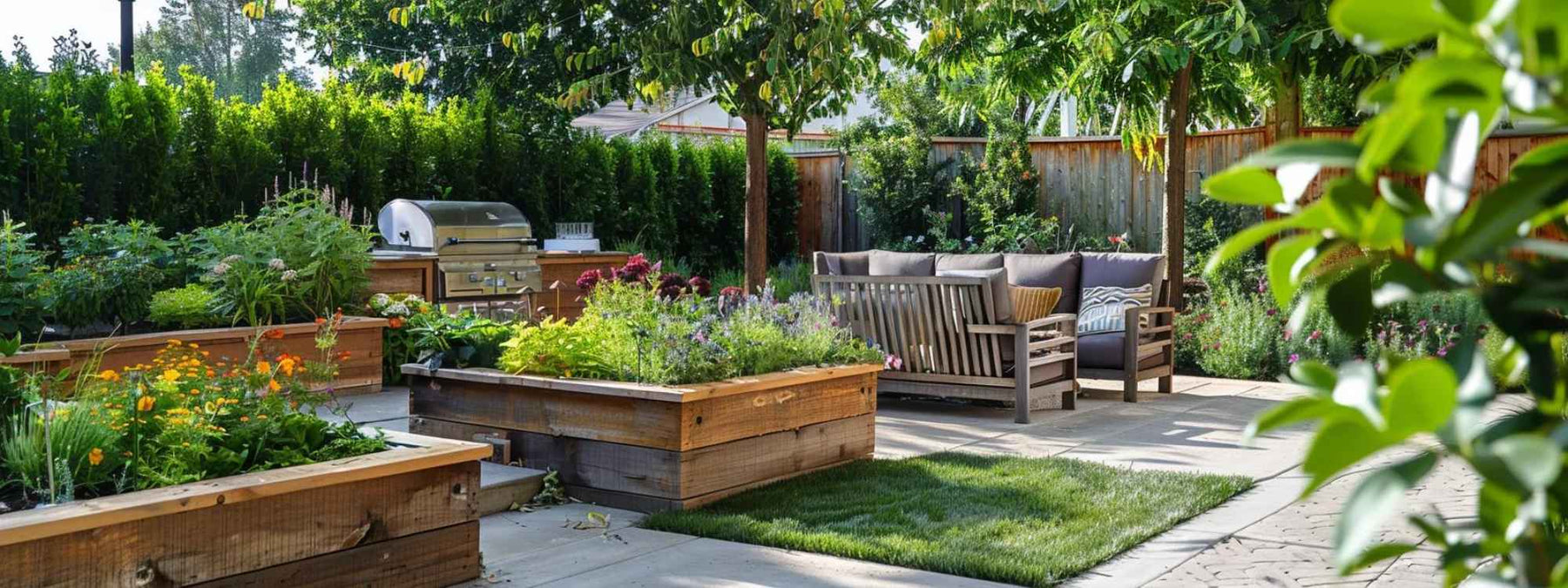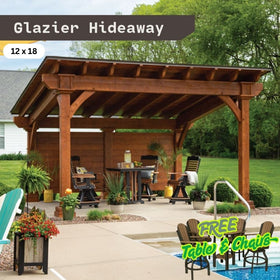512-777-0154

6 Cedar Raised Garden Beds Tricks to Boost Your Harvest
There’s something satisfying about stepping outside and grabbing dinner straight from the soil. Tomatoes are still warm from the sun. Basil that smells like basil. It’s the kind of quiet win that makes the effort feel worth it.
But not every garden delivers. You plan, plant, water, wait, and end up with a handful of stunted carrots and a single pepper that looks unsure of itself.
Even small changes can make a big difference. And if you’re using cedar raised garden beds, you’ve already got an advantage.
They’re sturdy. Naturally rot-resistant. And they keep your plants elevated, literally and figuratively. Cedar also helps with drainage, lasts longer than most materials, and honestly, just looks good. But good beds alone don’t guarantee a big harvest.
So if you’re after more than just a few sad sprouts this season, you’re in the right place. Below are six practical tricks that help your garden work smarter, not just harder.
Trick #1 – Use the Right Soil Mix
Soil isn’t just dirt. It’s the entire foundation of your garden. And when you’re working with raised beds, it matters even more.
Why? Because, unlike traditional gardens, raised garden beds don’t pull nutrients from the surrounding ground. Everything your plants need has to be in that box.
Cedar beds make things easier. They drain well, resist rot, and help your plants breathe. But that drainage means your soil mix needs to strike the right balance; it should hold moisture without getting soggy.
Here’s a simple recipe that works:
- 60% topsoil (get the best quality you can)
- 30% compost (homemade or store-bought)
- 10% perlite or vermiculite (helps with aeration and drainage)
If you’re not into composting, look for something like Black Kow compost or Dr. Earth’s Organic Blend at your local garden center. They’re beginner-friendly and plant-approved.
Soil doesn’t stay perfect forever. Top it up each spring. Toss in fresh compost. Mix it around a bit. It takes ten minutes and keeps your plants happy.
Trick #2 – Don’t Wing the Layout
Spacing matters more than you think. Too close, and your plants fight for space, sunlight, and nutrients. Too far, and you waste valuable room.
That’s where a little planning goes a long way.
One approach is square foot gardening. You divide your Outdoor Living Today 8×16 Raised Garden Bed into 1-foot sections and assign a crop to each. It keeps things tidy and efficient, especially in small spaces.
Another method is companion planting. Some plants get along better than others. A few good pairings:
- Tomatoes + Basil (great flavor, better growth)
- Carrots + Radishes (they grow at different depths)
- Lettuce + Onions (onions help deter pests)
These combinations work because the plants complement each other, either in space, nutrients, or pest resistance. When things are packed too tightly, air can’t flow well. That leads to mildew, mold, and pests that love damp, cramped corners.
Give each plant the room it needs to grow properly. You’ll avoid headaches later and get more out of your harvest. And if in doubt, draw a rough sketch first. It doesn’t need to be pretty, just practical. Your yard garden will thank you for it.
Trick #3 – Water Smarter, Not Harder
Cedar wood raised beds drain faster than in-ground gardens. That’s great for avoiding root rot, but it also means your plants dry out quicker.
So, consistency is key.
A simple morning watering routine works for most setups. It gives plants, vegetables, and herbs what they need before the heat kicks in. If you’re the forgetful type (no judgment), a basic timer or drip irrigation system can take the guesswork out of it.
But you don’t need fancy gear to get the job done. A reused milk jug with a few holes in the bottom? That’s a slow-release watering system.
Another trick people overlook: mulch. A 2-inch layer of straw, bark, or even shredded leaves helps lock in moisture. It also keeps weeds down and soil temperatures more stable.
Not sure if your plants need water? Stick your finger about two inches into the soil. If it feels dry, it’s time. Cracked soil or droopy leaves are also signs your garden’s getting thirsty.
Trick #4 – Feed the Soil, Not Just the Plants
Healthy soil does the heavy lifting. It gives your plants nutrients, supports root growth, and holds just the right amount of moisture. If your soil’s tired, your plants will be too.
That’s why feeding the soil, not just the plants, is the smarter move.
Start with something simple, like an organic granular fertilizer. Apply it once at the beginning of the season, then every few weeks if things look sluggish.
You can also give your soil a boost with worm castings or a mild compost tea. They’re easy to find and don’t smell as bad as they sound.
Not sure if your plants need help? Watch for pale or yellow leaves. If growth is slow, or your veggies look smaller than usual, that’s another sign the soil might be running low on nutrients.
One warning, though: don’t go overboard.
Too much fertilizer can burn roots and throw off the balance. In most cases, less is more. Especially in cedar lumber raised beds, where everything stays contained.
Strong soil means stronger plants. And stronger plants usually mean a better harvest.
Trick #5 – Keep Pests Guessing (And Out)
It’s a lot easier to keep bugs out than it is to get rid of them once they’ve moved in.
Start simple. Netting or row covers can block common garden intruders. They’re especially helpful early in the season when plants are most vulnerable.
Mix in some marigolds. They’re not just for looks; bugs hate them. And if you plant the same thing in the same spot every year? Stop. That’s how pests learn your routine. Try rotating crops to throw them off.
Cedar repels certain insects naturally. Another reason cedar wood raised beds, like Outdoor Living Today 12×8 Raised Garden Bed made from cedar, are a solid choice. For extra backup, here are a few soil-friendly options:
- A spray made from water, garlic, and a little dish soap
- Crushed eggshells or coffee grounds around the base of plants
- Diatomaceous earth for soft-bodied pests (use sparingly)
Don’t go to war with every bug you see. Bees, ladybugs, and hoverflies are on your side. They're pollinators and eat the bad guys.
Trick #6 – Make the Most of Vertical Space
Raised beds like the Outdoor Living Today 6×3 Urban Raised Garden Bed are great. But they’re still a box. Which means you only get so much surface area, unless you go vertical.
When you grow up instead of out, you free up room in your Outdoor Living Today 8×12 Raised Garden Bed. That means more plants, fewer crowding issues, and better airflow. Which usually leads to a better harvest.

Start with climbing crops like peas, pole beans, and cucumbers. They love a good trellis and don’t need much encouragement to climb. For herbs or small greens, try vertical stackers or tiered shelves along the back edge of the bed.
Just keep it stable. Cedar raised beds can handle support, but you don’t want something toppling in the wind. Anchor your trellis or arch directly into the soil or the frame of the Outdoor Living Today 4×1.5 Urban Raised Garden Bed, zip ties or garden wire work fine. Avoid anything too heavy or top-heavy, especially if you’re in a windy area.
And if you’re the DIY type, a few stakes and a roll of garden mesh can do the job for under ten bucks. More space doesn’t always mean more land. Sometimes it just means thinking a little taller.
Bonus Tips You’ll Be Glad You Knew
- Rotate your crops. Don’t plant the same thing in the same spot each year. It depletes the soil and invites repeat pest problems.
- Label your plants. Seedlings all look the same for a while. A few cheap plant tags can save you a lot of head scratching later.
- Plant in phases. Instead of putting everything in the ground at once, stagger it. You’ll stretch your harvest over more weeks.
- Keep a garden journal. Nothing fancy. Just a few notes each season on what worked—and what didn’t. Your future self will thank you.
- Clean up before winter. Pull dead plants, remove weeds, and cover the soil. It’s the best way to start fresh next spring without surprise pests.

Wha![]() t Makes a Big Difference in the End?
t Makes a Big Difference in the End?
None of these gardening tricks require fancy tools or special skills. You won’t need pricey equipment or an advanced gardening degree. Just patience, a little consistency, and some attention to detail. That’s the secret to gardening well: showing up regularly and doing the small things right.
But here’s something else worth keeping in mind: Your garden doesn’t need to be perfect. Sometimes your tomatoes won’t look picture-perfect. Sometimes the lettuce bolts a bit early. And that's okay.
Gardening is about trial and error. It’s about experimenting, adjusting, and figuring out what works best in your space. Take notes. Pay attention to what succeeds (and what doesn’t). Small tweaks can lead to big results.
If you enjoyed these simple tricks, we’ve got plenty more outdoor living guides on our blogs. Everything from choosing the right plants to creating spaces you'll use.
Gardening smarter, not harder, is a habit. Stick with it, and your cedar raised beds will reward you season after season.








